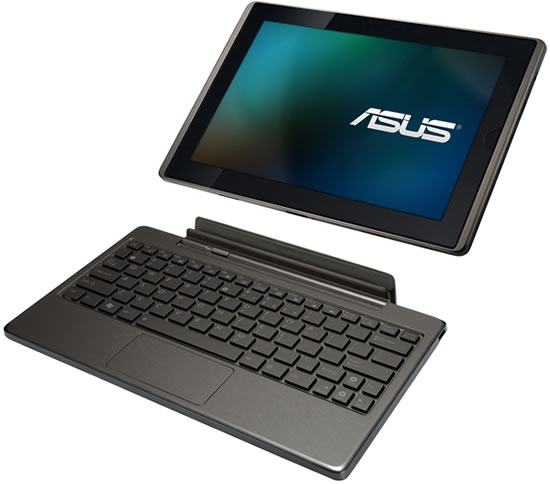Last week, the Asus Eee Pad Transformer arrived in the US, and was quickly sold out. Rumors around the Internet quickly erupted, suggesting that the device was low in volumes due to component shortages or even because of quality control issues. Asus has now confirmed that it is expecting to produce 100,000 units in May and 200,000+ units in June. Frankly, I think it's a shame that Asus has set its expectations so low.
When Netbook News asked when the shortage would be over, an Asus spokesperson said that "we will see a significant alleviation in the month of June" and that "if the demand continues to increase substantially then we will have to continue to ramp up production in order to fulfill our customers' demand." He reiterated that "it really depends on the demand. The current demand surpasses our expectations by far."

The Eee Pad Transformer sets itself apart from the tablet competition with an optional chiclet-style keyboard dock that essentially transforms the device into a netbook. Besides making the device much more convenient to type on and handle productivity tasks, it also extends battery life from around 9.5 hours to 16 hours thanks to a second battery within. The actual device costs $400 for the 16GB Wi-Fi only model, although the dock will set you back an extra $150. Still, the price is very competitive given that this is one of the few tablets available with Android 3.0 (codenamed Honeycomb).
The Transformer has a 10.1-inch 1280×800 IPS Gorilla Glass capacitive touchscreen display, a 1GHz Nvidia Tegra 2 dual-core processor, 1GB of RAM, 5MP rear and 1.2MP front cameras, a Micro SD expansion slot, and HDMI out. You'll also find speakers and audio jacks, USB 2.0, 802.11b/g/n and Bluetooth 2.1 connectivity, as well as a G-sensor, light sensor, gyroscope, e-compass, and GPS. It also comes with Asus' Waveshare interface, which includes MyNet (streams media to networked devices), MyLibrary (digital bookstore) and MyCloud (cloud storage and remote access tool).